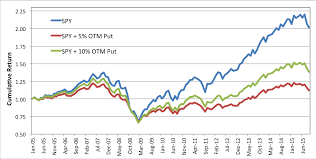Start Date:
23 July, 2025.
End Date:
25 July, 2025.
Customers Relationship Management is at the center of the Logistics Master class Course. It is often said in German language that “"der Kunde ist König" (the customer is king). This course has been designed with the customer, the product and delivery efficiency and effectively as underlying focus.
Learning Objective
At the end of this training session, participants will be able to:
- Identify the unique position the customer occupy in business enterprise
- Describe why logistics is important and discuss the major decision areas that make up logistics.
- List the strengths and weaknesses of the various modes of transportation and discuss the role of multimodal solutions.
- Identify the major types of warehousing solutions and their benefits.
- Discuss the purpose of a logistics strategy and how logistics can support the overall business strategy.
- Apply cost consideration in logistics decision
- Improve customers experience in patronizing the company products
Course Contents
Day 1
- Customer Relationship Management
- The nexus between the customer and the product
- What is customer relationship management
- CRM Processes
- Service automation
- Contemporary technology in CRM
- CRM Data sources
- Empowering CRM staff
- Benefits of a well-coordinated CRM
- Balancing Customer Service and Cost Efficiency
- Sales forecasting
- Product Shortage - Allocation and Arbitrage
- Seasonal Pricing Strategies
- CRM Success Factors: Key Metrics
- In-bound Logistics - Supplier Relationship Management
- The objectives of the SRM process
- Scope of SRM
- Vendor Selection/Vender Management
- EOQ and Volume Discounts
- Transportation…
- Modes
- Formats
- Pricing
- Warehousing
- Consolidation
- Cross-Docking and Break-Bulk
- Hub-and-Spoke
- Inventory
- Technological Breakthroughs
Day 2
- Manufacturing
- Capacity optimization
- Techniques to utilize capacity effectively
- How the capacity can be enhanced
- Push/Pull View
- What is Inventory
- Replenishment policies – WIP/RM
- Safety stock
- Smoothing Stock / Inventory Build
- Value added in Manufacturing and Logistics Operations
- Manufacturing Operation and cost
- Elements of Manufacturing Cost
- Cost Of Goods Manufactured (COGM) and
- Cost of Goods Sold (COGS)
- Unit Cost or Product Cost
- Cost Margin and Break-Even Volume
- Inventory Valuation Methods
- Lead Time
- Role of Inventory
- ABC Classification of Inventory
- Continuous Flow Manufacturing
- Discrete Batch manufacturing
- Backlog and Backorder
- Lot splitting
- Performance measures for manufacturing operations
- Outbound Logistics
- Distribution Requirement Planning (DRP)
- DRP Information
- Lead Time and Reliability
- Distribution and Warehousing Processes
- Distribution: Front-end of Business
- Safety Stock
- Minimum/Maximum
- Determining Safety Stock
- Stockpile and Rotations
- Inventory Profile
- Inventory Push vs. Pull
- Pipe Line Inventory: Little’s Law
- inventory can be measured in different ways
- Inventory turns
- EOQ – Economic Order Quantity
- Inventory identification
- Multi-echelon inventory planning
- supply constraints
Day 3
- Transportation…
- Modes
- Formats
- Pricing
- Warehousing
- Consolidation
- Cross-Docking and Break-Bulk
- Hub-and-Spoke
- Inventory
- Technological Breakthroughs
- Use Of Technology in Logistics
- computerized planning systems
- Competitive Strategy
- Technology and Strategic differentiation
- Technology and Competitive Strategy
- Three broad areas of technology applications
- Code readers and scanners
- Point Of Sale-Scanning
- Bar Code
- 2D Matrix Code
- RFID – Radio Frequency Identification
- RTLS – Real Time Location System
- LASER
- GPS - Global Positioning Systems
- Cross Docking - Made possible by Technology
- EDI - Electronic Data Interchange
- ALE - Application Linkage Enabling
- Delivery Effectiveness
- Evolving Performance Measures: Delivery
- Evolving Performance Measures: Price
- Customer feedback








